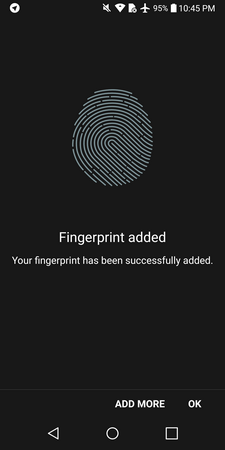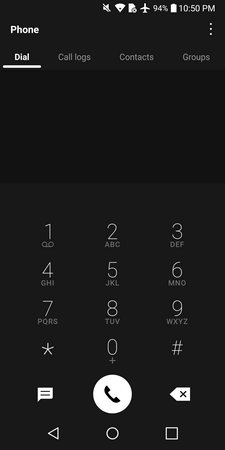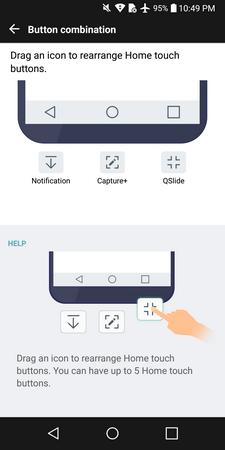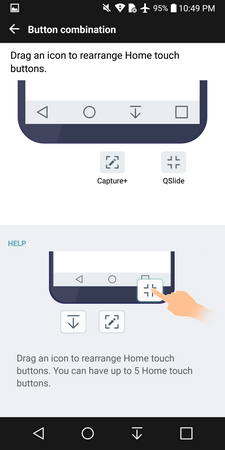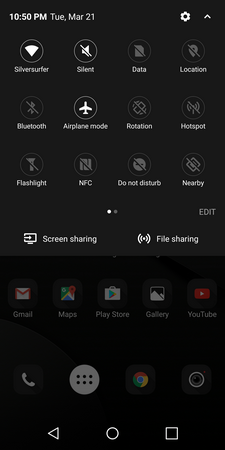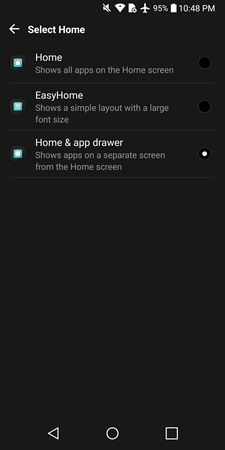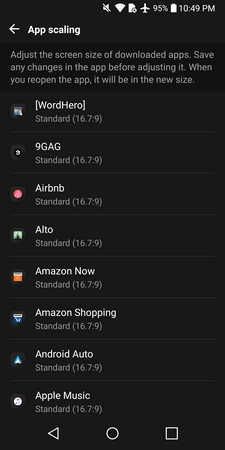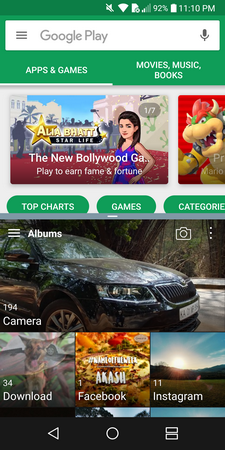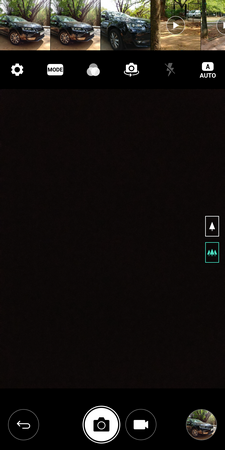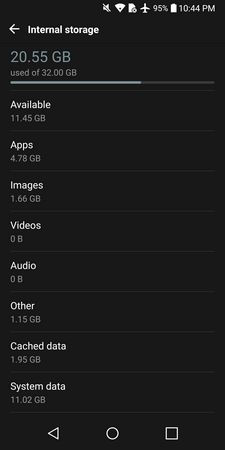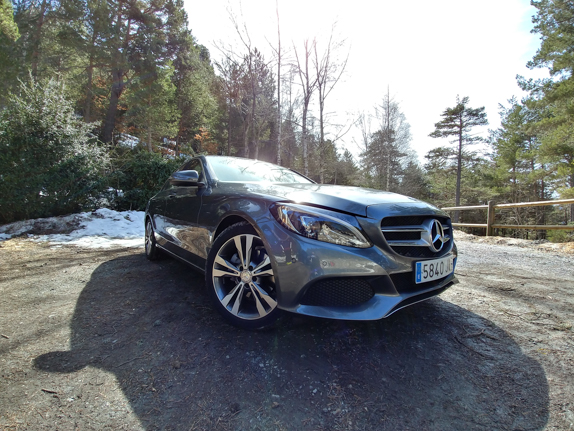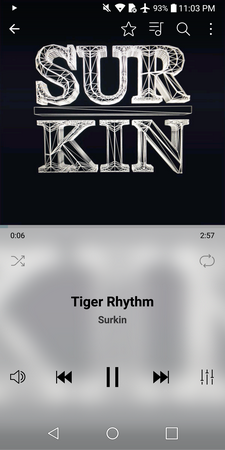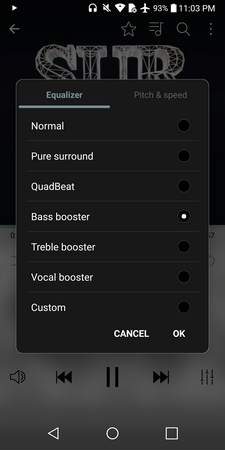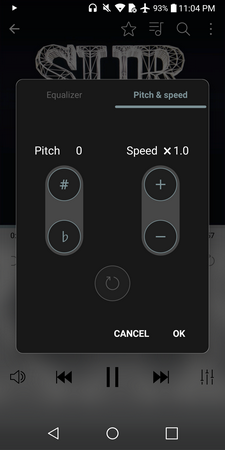
The number 5 seems to be quite problematic for the Koreans. Samsung faced some of the worst reviews ever for a flagship product and one of the worst sales performance in their flagship Galaxy S line-up with the S5. The S5 did bring in some improvements but those were minor and in the process almost made some bad decisions including larger bezels etc. All these small things led to very disappointing sales figures and Samsung knew that had to start afresh. Project Zero was born and eventually resulted in the Galaxy S6 and S6 Edge devices which were a huge leap from their preceding model. They were a step in the right direction and Samsung has been doing everything perfectly well with their smartphones since except for the Note7 battery exploding issues which did shake things up a bit but still resulted in one of the most profitable years for Samsung with the S7 series.
LG too tried to be very different by introducing a modular setup with the G5. They even had a removable battery and memory expansion, two features which were becoming increasingly rarer on higher end smartphones. However, the modular setup was a dud and these two aspects did almost nothing to help in the sales. LG knew that they too needed to think in a new direction or else things won’t look up. The end result is the G6 which throws the removable battery out of the window. That’s still fine since customer needs have changed over the years and while memory expansion might still be a priority for many, users have learnt to live with built-in batteries and would be fine with good battery life. Let us take a look at the G6 in detail and see whether LG have managed to fix their flaws and develop a true flagship this time around.
Design, Materials and Build Quality
The LG G5 had an abysmal design. It was too big for a smartphone with that display size due to the humongous bezels. Sure, the modular design could be given as an excuse for the bezels being bigger than normal. However, the modular concept that LG had envisioned was far from perfect too. The G5 also lacked refinement. It felt very much like a prototype even on the final device and till date, people remain confused on whether it’s actually metal or metal disguised to look like plastic or plastic or plastic over metal. Whatever it was, the end result was far from impressive for a flagship product especially after LG had produced a well built and premium smartphone such as the V10.

We were delighted after handling the G6 for the first time. It was totally unlike the G5. The size was really small and it was so easy to handle despite having a large 5.7” screen. In fact, it is smaller than the S7 edge which has a smaller 5.5” display. The S7 edge is a tad bit thinner and the edge screen may make it feel a bit more compact than it actually is but the G6 is indeed smaller. I remember a time when handling devices over 5 inches itself were a handful. The G6 feels effortless when using it thanks to the minimal bezels on all four corners. The G6 is in fact only marginally bigger than the P10 from Huawei which has a much smaller 5.1-inch display.

LG have also paid a lot of attention to the ergonomics. Having no bezels is great but there needs to be a place to rest your fingers or else it could cause fatigue over prolonged durations. For the same reason, the G6 has a thicker bottom lip compared to the portion above the screen. There is an LG branding here while you find the front facing camera, sensors and the earpiece at the top. The handset is really pocketable and fits well in the palm of your hands thanks to the curved back which is now made of glass. LG has realised that their “premium” plastic or leather backs won’t just cut it anymore and this time around, the change of materials really does make a difference. The entire handset feels solid and you know that LG had done all they could to pack things into as tight a package as possible. The weight distribution is perfect and as a result, the handset doesn’t feel as heavy as it should have felt.
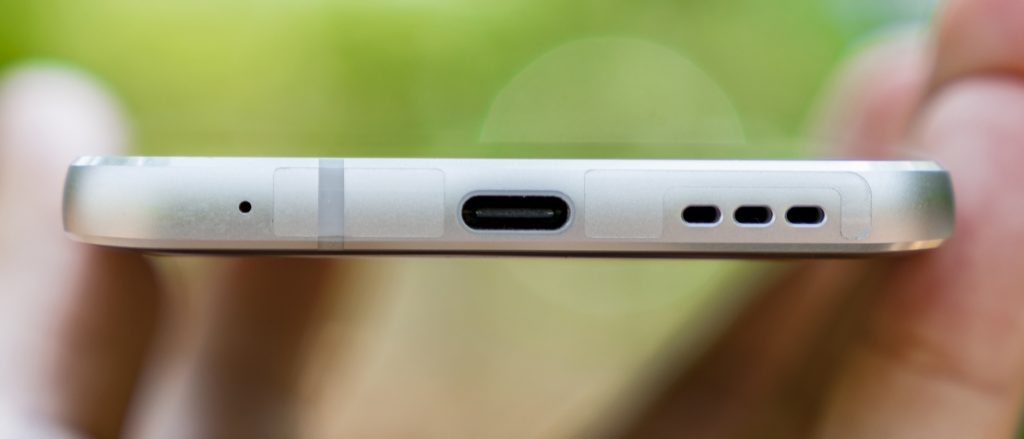
The bottom houses the primary microphone, USB Type-C port and loudspeaker while you find the 3.5mm audio jack and secondary microphone at the top.
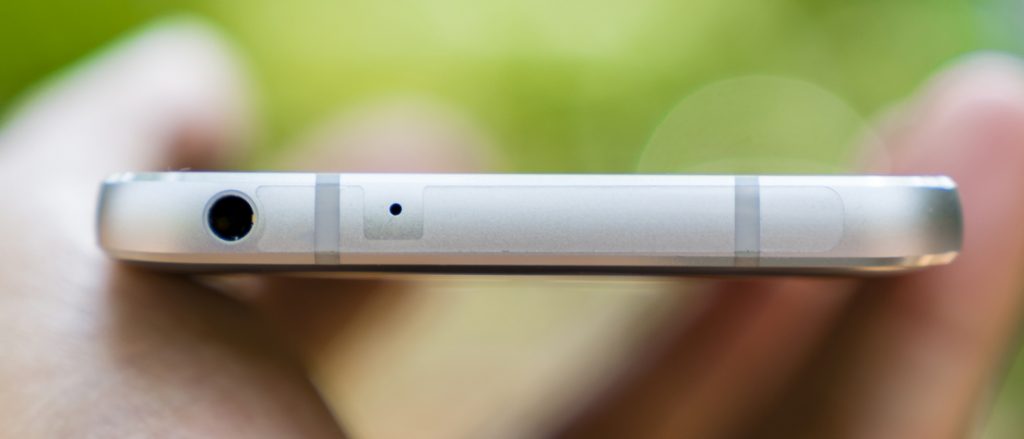
LG had switched back to side mounted volume controls with the G5 and the G6 too has dedicated volume buttons on the left side. At the right side, you will find the card tray that requires a PIN to be ejected.
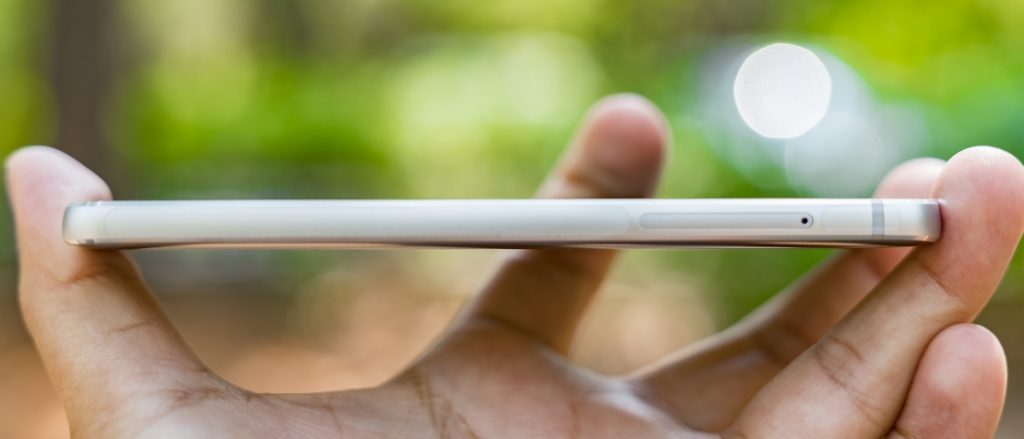
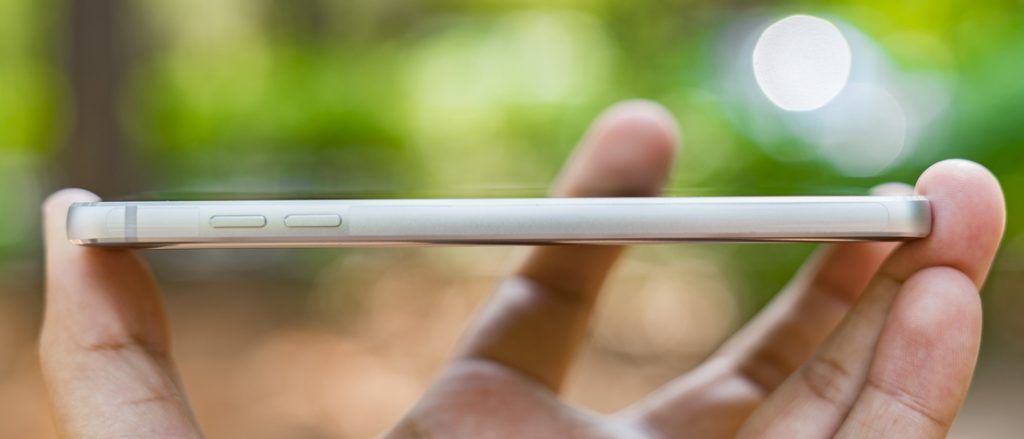
At the back, you’ll find the camera module which remains flush with the body but still is protected by a separate piece of glass and the cut-out is clearly visible. Think this is perhaps a move to reduce the glass shattering. The large a single piece of glass is, the easier it is to break. Also, if it was once single piece of glass, there is a higher chance of having a crack appear over the cameras when the main back glass is shattered. If you happen to break just the camera glass, it should be enough to replace just that small rectangular portion as well.
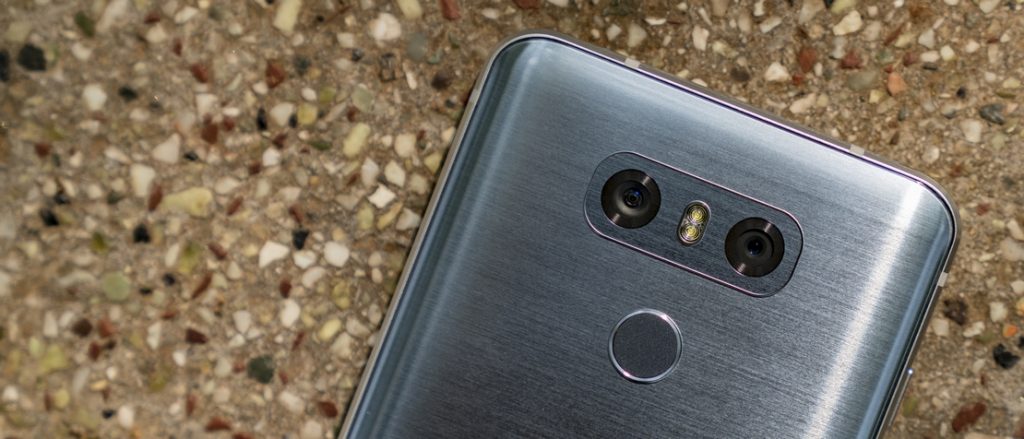
The fingerprint sensor is located below the camera module and finally you have the G6 branding at the bottom as well. This time around, LG have had to cave in to opting for a more solid design which meant sacrificing the removable battery feature that had become synonymous with the G series for a while now.
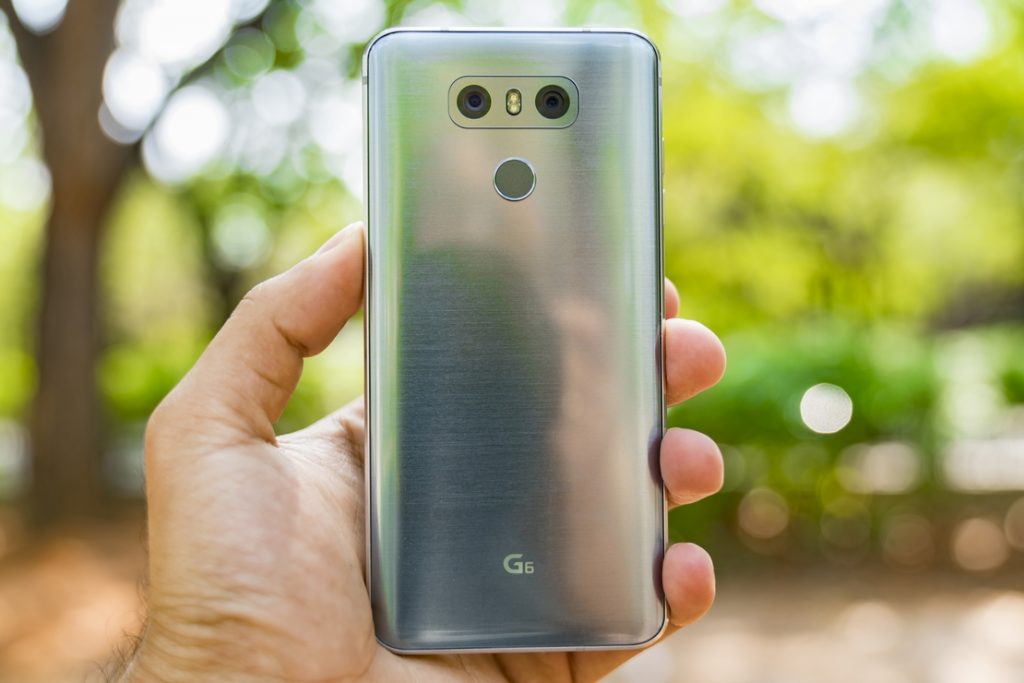
The curved back feels great but unfortunately LG have gone for a flat glass up front on the display and that could be the only thing that takes away from the premium feel. For some reason, probably the shape; the G6 reminds me of the LG KU990 Viewty which was a really innovative smartphone at the time. The chamfered edges on the G6 looks really nice and aren’t too sharp. It flows well with the design and looks really good on the Silver and Black models. My favourite would perhaps be the Black model because it looks really good and the bezels look even more minimal than they already are. However, practically speaking, the Silver and White might be better since they don’t reveal fingerprints as much. The back panel especially on the Black variant is a total fingerprint magnet. The silver model has a brushed metal look that you could easily mistake for a metal back if you view it from a distance. The White model too has its share of uniqueness thanks to the Gold colour inserts.
Durability
LG also learnt the hard way that durability goes a long way in selling the product to the customer. It only made sense to join the bandwagon considering the fact that Apple too made their phones waterproof after Samsung did so again with the S7 series. The LG G6 this time around has an IP68 rating that protects it from dust and water. The rear glass is Corning Gorilla Glass 5 and so far, we haven’t seen any major scratches on our unit. Micro-scratches too if any are masked almost completely due to the brushed metal look on the Silver variant. We would think that the scratches would be more apparent on the White and easily visible on the Black. GG5 would also make it less prone to breakage in case of drops.
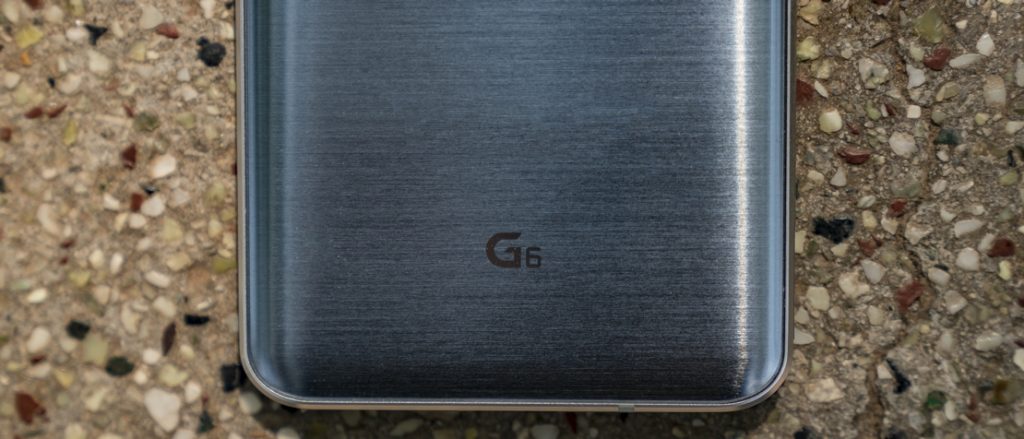
For some weird reason, LG has used Gorilla Glass 3 or at least stated that it is using GG3 for the display. On paper, this would mean that the front display glass isn’t as durable as the back and perhaps it doesn’t require as much durability but one would expense LG not to cut any corners when it comes to their flagship smartphones. Nonetheless, this doesn’t seem to affect the durability in real world use since we haven’t gotten any scratches on the front yet even after weeks of testing. There is even a report going around that the camera glass is also GG3 and that LG cited cost cutting as the reason for picking this.
Display
The G6 comes equipped with a surprisingly large 5.7″ display. The phone’s size masks the size of the display pretty well and you do get a feeling that the screen is smaller than it is as a result. The 18:9 aspect ratio could also be a factor that attributes to the feeling.
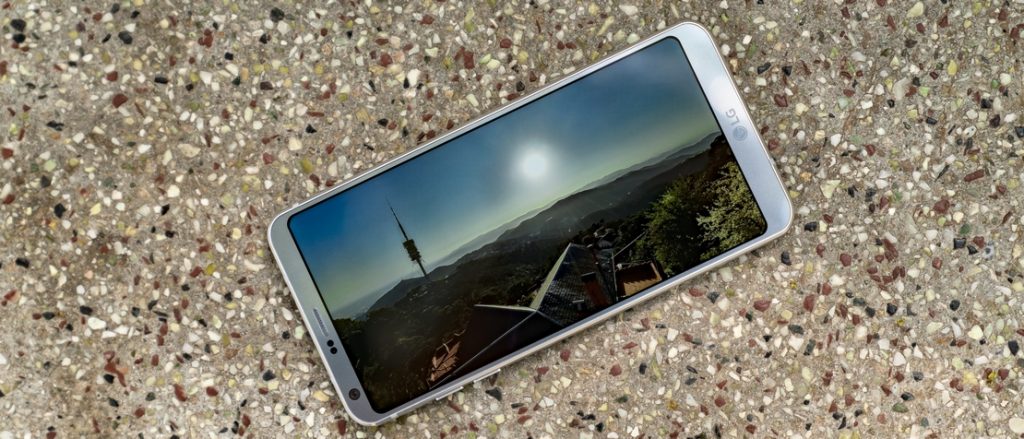
I expected to find the aspect ratio weird and not to my liking. However, I was delighted to find that it was indeed quite nice to use and LG does make proper use of the screen estate which we shall talk about in the software aspect of things. Content that is natively captured on the device can be set to 18:9 ratio and looks great on the display.
The 18:9 aspect ratio also means that the display has an unconventional resolution of 2880 x 1440 pixels. The display is sharp and offers good sunlight legibility despite the reflective display. Brightness is more than sufficient indoors as well and the one thing we missed is the 2.5D curved glass. The display doesn’t feel as good to swipe on as most other flagships with curved glass or glass that tapers at the edges. In that respect, the G6 feels like a low-end budget Android smartphone. The colours are beautiful too as the display supports both Dolby Vision and HDR10 technologies. You would however need proper content to make use of those technologies and currently there are only a few titles on Amazon Prime or Netflix that support it.
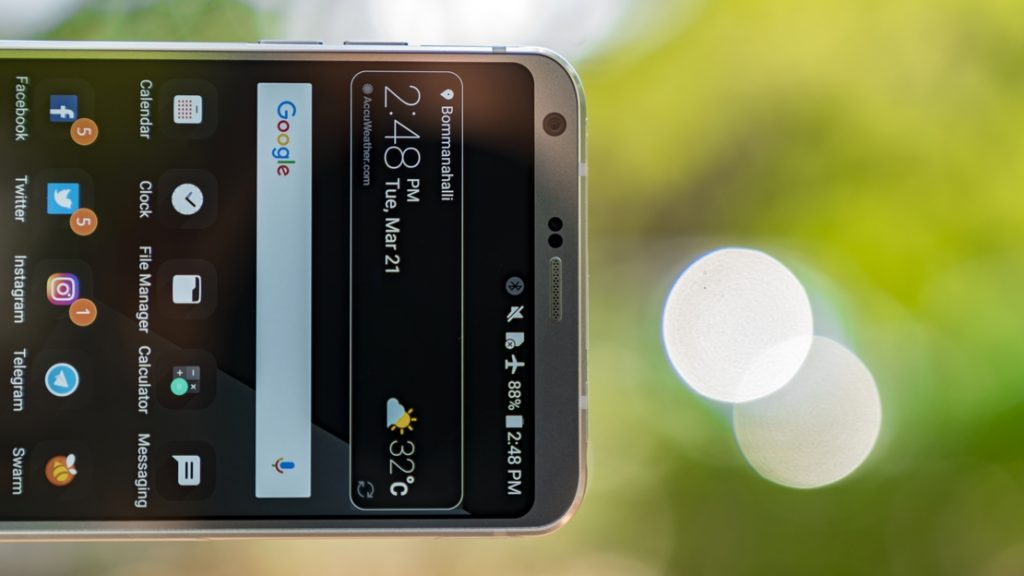
The display also has well-rounded off corners and it seems like the real deal. Several manufacturers use a regular rectangular screen and have a cut out with rounded corners to give it that effect. But in this case, it does seem like the real deal and it looks unique compared to most of the other offerings. The G6 supports double tap to wake/sleep as well as an always on display mode that can be configured to display different content and to timeout at a specific time.
The display has very easy reachability and access due to the phone being small and easy to handle. In fact, I’ve never come across a phablet that is probably as easy to use as the LG G6. It even puts some 4.7″ or 5 inch phones to shame. As a result, you really don’t have or need much options to optimize the UI further for single-handed usage. There is a comfort view mode which essentially cuts down the amount of blue light emitted by the screen. This will help reduce the strain on your eyes and brain. My personal favorite is the black and white option in the comfort view mode which has been carried over from the V20. I don’t like it when the screen turns yellowish but I don’t mind going all black and white. It doesn’t improve the battery life much but sure does a good job at reducing eye strain.
Fingerprint Scanner
LG fingerprint scanners have always had an issue with solidness. They seem to move around and rattle a bit for no reason whatsoever. Luckily, the fingerprint scanner is extremely solid and stays perfectly in place on the G6. It does so without compromising on function and still gives great feedback when clicked. The fingerprint sensor doubles as the power/lock button on the G6. Since it is always active, users can unlock the phone either by just placing their finger on the sensor is waking the phone first then placing their finger on the sensor.
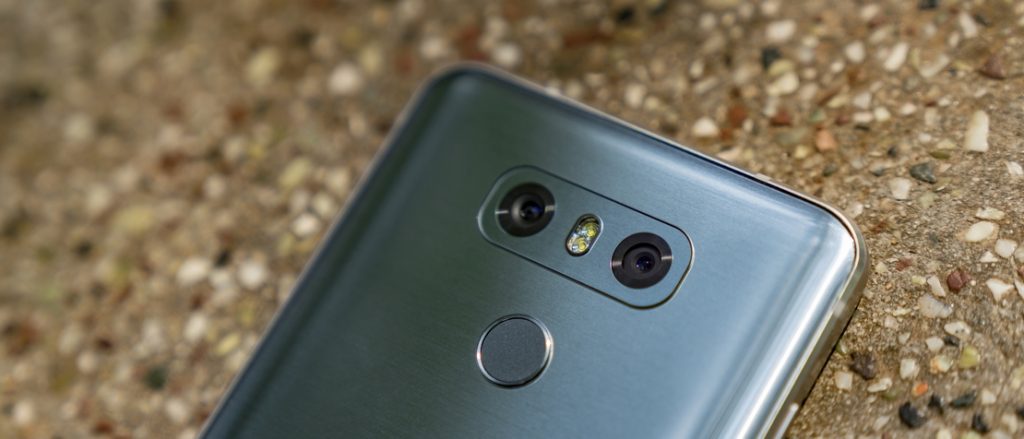
The sensor recognizes fingerprints in 360 degrees and does a good job with recognition even with moisture and is expected to do so since the phone is waterproof. The S7 series for example did a terrible job if your fingers were wet or sweaty. The G6 on the other hand is still quite accurate. The unlock speeds are quite fast as well but the transition from blank screen to the home screen gives the impression that it is slower than it actually is.
Users can add a maximum of 5 fingerprints on the device and use it to unlock the phone and/or unlock specific locked items in the Gallery or QuickMemo+ app. You can enroll the same finger multiple times since the system isn’t smart enough to detect that the finger has already been registered. This is something that we feel Huawei has mastered well on their phones by letting users know that they have already registered that finger. You also need to set a backup password, pin or pattern in order to access the phone when the sensor fails.
Calling and Messaging
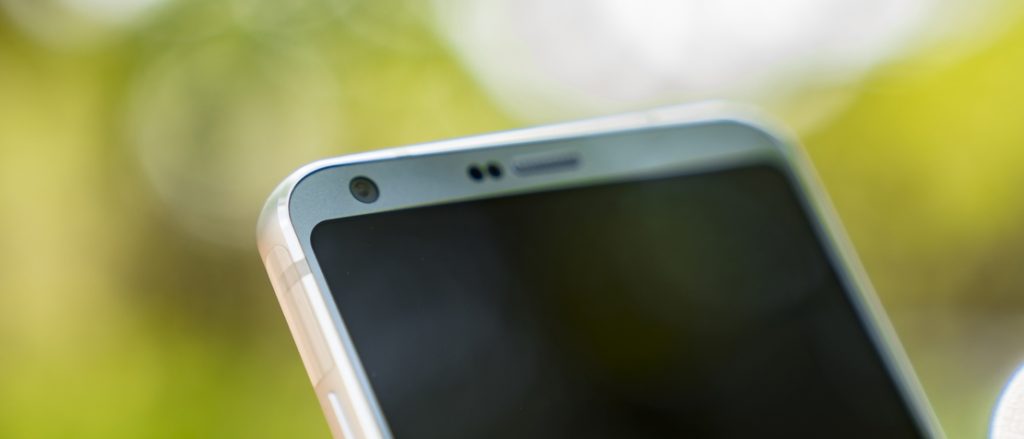
Call quality is quite good on the LG G6. The earpiece is sufficiently loud and the clarity is good too. It feels a bit hollower than most other handsets on the market but not by a large extent. The loudspeaker is quite good too even in noisy environments. The dialer is large and easy to use. You can enter a specific number or search amongst your contacts. It even comes with built-in call screening and number blocking.
The screen is also easy to type on despite the narrower aspect ratio. The default keyboard is LG Keyboard which has a layout very similar to Google Keyboard which I personally like a lot. As a result, I felt pretty much at home and could get used to the LG Keyboard easily. It is customizable and supports trace inputs. You can adjust the layout, height and also allows one-handed usage by allowing you to move the keyboard towards the left or right. The landscape orientation even allows a split screen keyboard by moving the keyboard apart with two fingers.
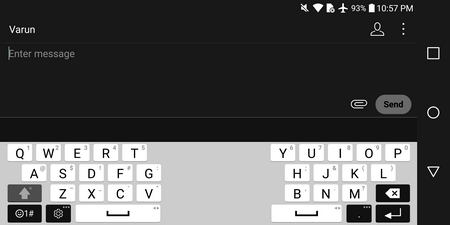
Software and UI
The LG G6 ships with Android 7.0 with LG UX 6.0 out of the box. Note that the software version that we are using for the review is still not the final build so the phone will have a few changes or updates by the time it releases.
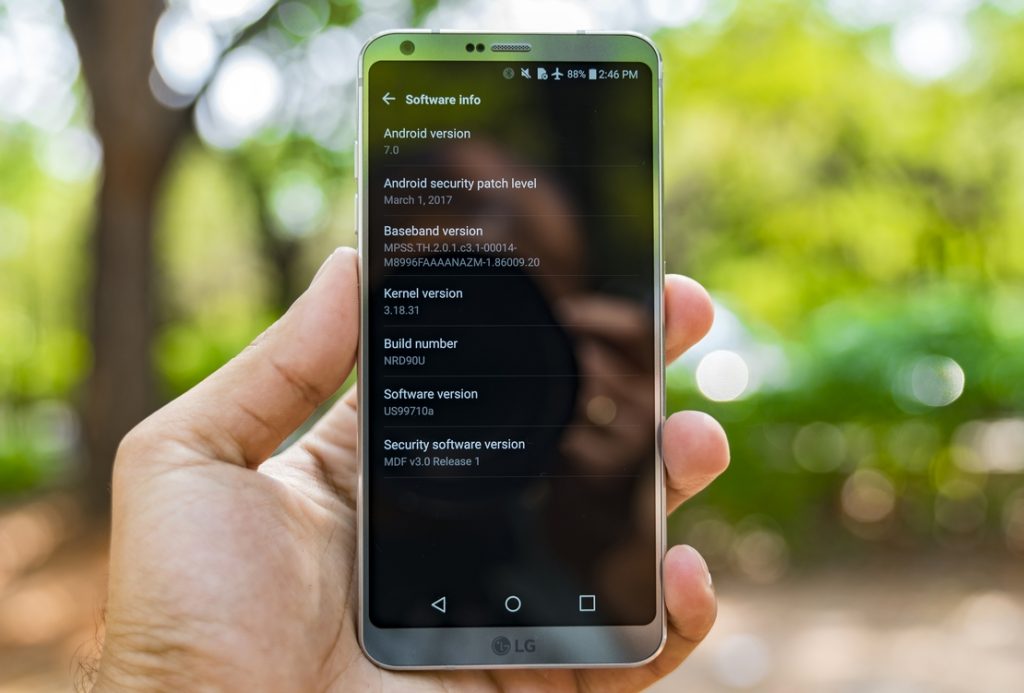
LG have always had a customizable but ugly UI. This time around, it is less ugly and less obtrusive while maintaining the customizability. The home screen by default displays all the apps on the home screen itself and users have to enable the app drawer from the settings if they need it. I personally can’t stand not having an app drawer so I keep it enabled.
The lockscreen is customizable with the position of the clock, shortcuts, swipe effect, weather animation etc. You can also choose to theme the phone to achieve different visual looks and download additional ones online.
Users can choose the navigation buttons that appear at the bottom. Apart from the basic home, return and multi-tasking buttons, you can add two more to the row which can be a notification draw toggle or shortcuts to Capture+ and QSlide.
Users can also adjust the display size by making the items on the screen larger or smaller to their liking. You can even adjust the app scaling of apps individually.
The notification drawer is customizable as well and has a two page layout. It supports Miracast and Chromecast as well to mirror your smartphone wirelessly.
Perhaps the main use case for the taller display (when held vertically) is the additional space for multi-tasking apps. The extra vertical space does help to hold more information at a glance that a wider display. Additionally, the camera app too allows you to preview your recently captured images as thumbnails without having the images interrupt your shooting or having to press the gallery preview button.
Storage, Connectivity and Performance
The LG G6 comes in either 32GB or 64GB storage variants however most regions would only be getting the 32GB variant. The device also has microSD card support up to 256GB in capacity. Some markets come with a single SIM slot and dedicated memory card slot while others will get a Hybrid DualSIM card slot.
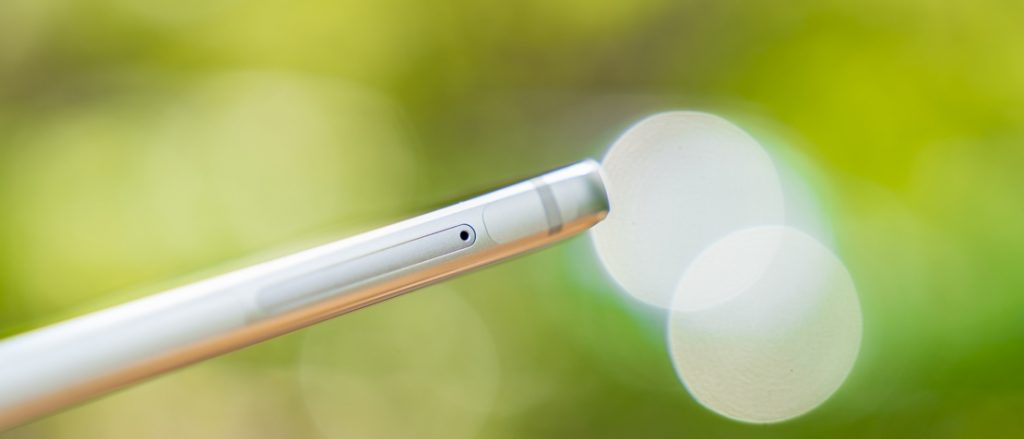
The phone supports dual-band WiFi 802.11 a/b/g/n/ac, Bluetooth 4.2 and comes with a USB Type-C port with USB 3.1 standard. The phone is powered by a Snapdragon 821 chipset and comes with 4GB of RAM. While the performance of the phone is top-notch and is one of the fastest on the market, we can’t help but miss what could’ve been an even faster and more efficient phone had Samsung not hoarded all the 835 chipsets for themselves.
The LG G6 will keep you happy in terms of performance but you’ll still ache a little if you are someone who loves to brag about having the latest chipset on your phone since the 821 is technically a 2016 product albeit a good one at that.
Camera
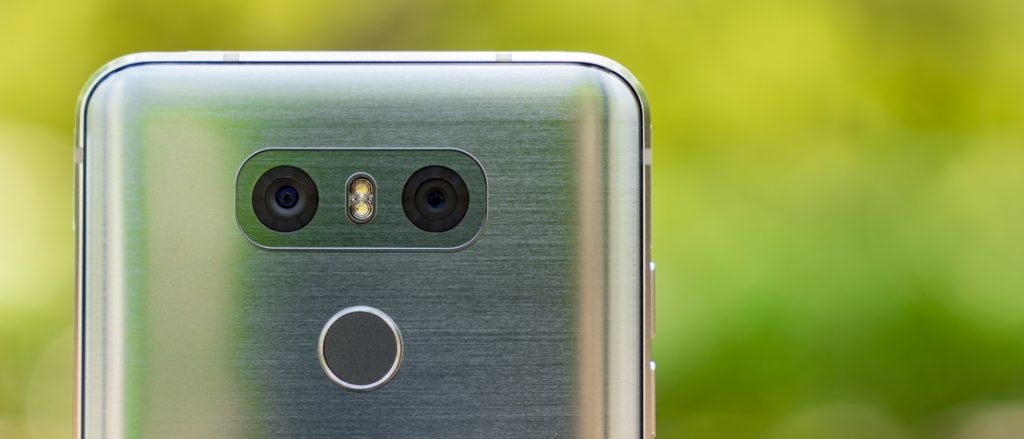
This is probably the most important aspect of the LG G6 and where it has the chance to shine brighter than other players on the market. The LG G5 and V20 featured dual lens systems too but they had a different set of sensors. They had a primary camera with 16 Megapixels of resolution and a secondary wide-angle fixed focus camera with 8 Megapixels of resolution.
The G6 on the other hand has a dual 13 Megapixel setup. One with a regular field of view while the other is still a wide-angle. The field of view of the regular camera is now narrower at 71 degrees instead of 75 degrees and the wide-angle camera too is narrower with 125 degrees as opposed to 135 degrees of the G5 and V20. The wide-angle camera still offers a really insane amount of coverage even now. The phone can take some very dramatic shots especially when using the 16:9 and 18:9 aspect ratios with the wide-angle camera. Here are some photos that demonstrate the difference between the regular and wide-angle lens. The photos at the top are taken with the regular lens while the photos at the bottom are with the wide-angle lens.
Here are some photos that show the difference between the various aspect ratios:
Funnily enough, the sensors used aren’t really high-end and are something that is most often found on mid ranger smartphones. They are Sony IMX258 sensors with 1.12 micron pixel size and 1/3.06″ sensor size. Perhaps another cost cutting move from LG just like the usage of the Gorilla Glass 3. The regular camera gets f1.8 aperture and stabilization while the wide-angle camera doesn’t have stabilization and has a smaller f2.4 aperture. Surprisingly, the results that these two yield aren’t as mediocre as we thought they would be. Low light performance is good but not amazing. Noise does tend to creep in a bit especially on the wide-angle lens due to the smaller aperture. Click on any of the samples below for the full resolution photos:
The primary camera and the wide angle camera do a great job when it comes to taking photos. The focus is quick on the regular camera while the focus is fixed on the wide-angle. The shutter speed is fast and the dynamic range is really good when using the HDR mode. The dynamic range isn’t as good as the Google Pixel phones but is better than almost every other phone on the market and may only be matched or be beaten in some cases by the S7 or iPhone 7 duo. Here are some photos taken with and without HDR. The photo on top are without HDR and the ones below are with HDR.
The main issue however is with the post processing. LG seem to have carried over the excessive noise reduction for the images that was present on the G5 and V20. Capturing RAW photos and then processing them yourself will yield better results and dynamic range. LG really needs to improve their algorithm here.
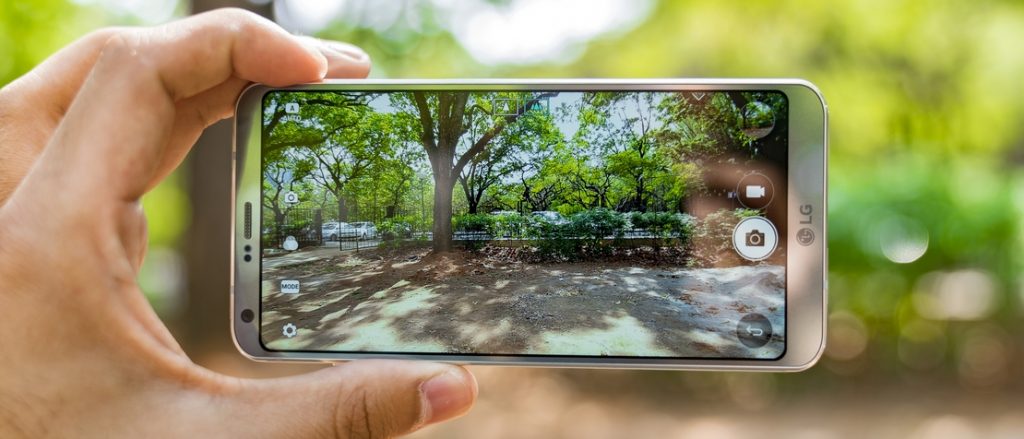
The camera offers full manual controls not just for photo but also for video which is a first in the G series as it was previously exclusive to the V series. You also still get the ability to capture 21:9 aspect ratio videos but there is an added 18:9 aspect ratio mode as well this time around. Videos max out at 4K resolution 30fps while lower resolutions can go up to 60 fps. Stabilization isn’t available on 4K but is there on other resolutions. The stabilization produces some really great results and feels quite buttery. You also get the option of recording HiFi audio for the videos but will be available only for playback on the device itself.
The front facing camera too is capable of taking both regular and wide-angle selfies. This time around, it is a 5 Megapixel sensor just like the V20 instead of the 8 MP one on the G5.
Overall, the G6 cameras are pretty impressive and that is something that I least expected from mid range sensors. Just makes you wonder what they could’ve achieved if they didn’t mind the extra cost and included some better sensors in the mix.
Music
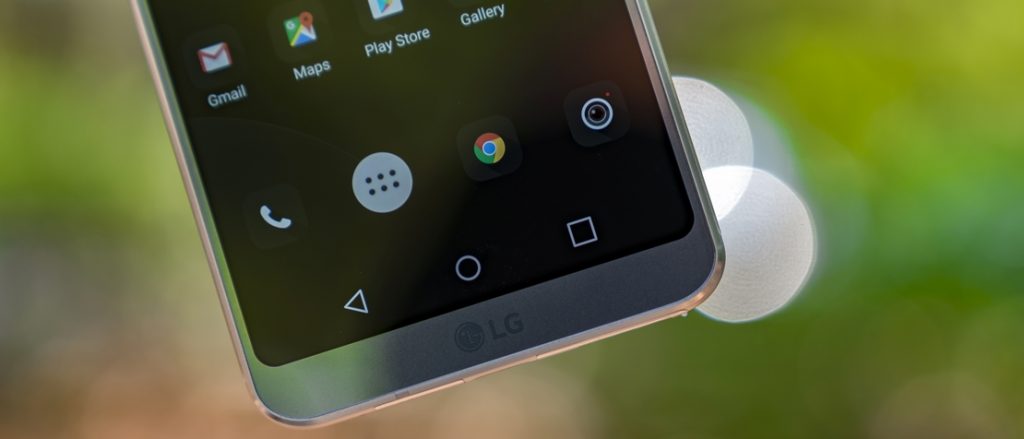
The stock player on the LG G6 is called Music. It allows you to play files that are stored locally as well as on the cloud. It gives you several different ways to sort and view your music. The rest of the player is pretty much basic. You get an equalizer with presets as well as the ability to play with the speed and tempo. It also supports a wide variety of formats.
Coming to the audio quality itself, the G6 will come with a QuadDAC on the South Korean variants. The rest of the world will get a single DAC. The sound quality on LG flagships of the recent past including the V10, G5 and V20 have been excellent and the G6 is no exception. The V20 was definitely louder but the G6 retains the same audio signature and has incredible clarity for a smartphone. The dynamic range is great and there is barely any stereo crosstalk either.
Our review unit also had an FM Radio feature which required you to connect a headphone in order to listen to it. The headphone acts as an antenna and you can choose to listen over the headphones or via speaker once connected. It included a rotary dial to select the channels, can store your favourite stations and also includes an auto-off timer. Whether or not the FM Radio functionality will come to your device will apparently be market dependent so do make sure to check for compatibility if the feature is a deal-breaker for you.
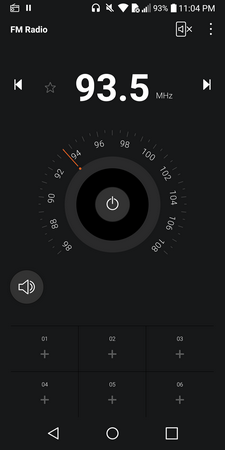
Battery Life
The LG G6 has a 3300 non-removable battery under the hood. The key term here being non-removable since LG flagships have all had removable batteries for quite a while and had even become go to phones for ex-Galaxy Note users who considered it to be a deal breaker. The G6 battery life is good but is far from being great. Some people can get a day of usage while others may need to find a power socket or connect the phone to a powerbank before the end of the day. I personally had to recharge the phone on most days before charging it again overnight.
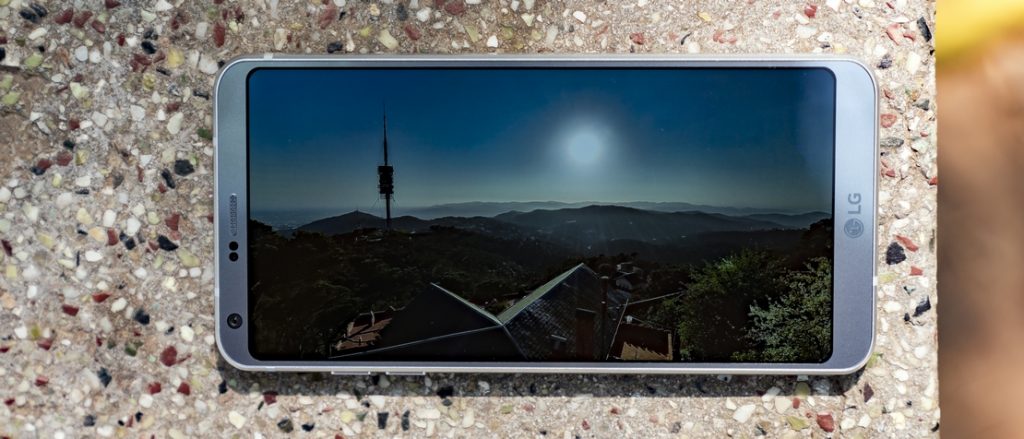
Luckily, there is QuickCharge 3.0 on board and LG promises 50% charge in 30 minutes using the appropriate charger. There will be a wireless charging variant in some markets but most likely this would be restricted to markets such as South Korea and/or USA.
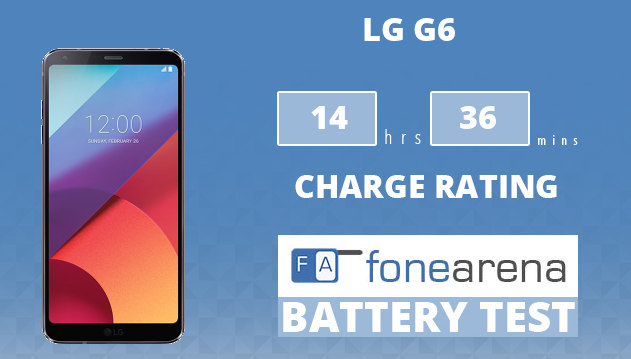
It achieved a One Charge Rating of 14 hours and 36 minutes mainly due to brilliant talk time, otherwise this is average. Check out the complete set of battery life test results here.
Conclusion
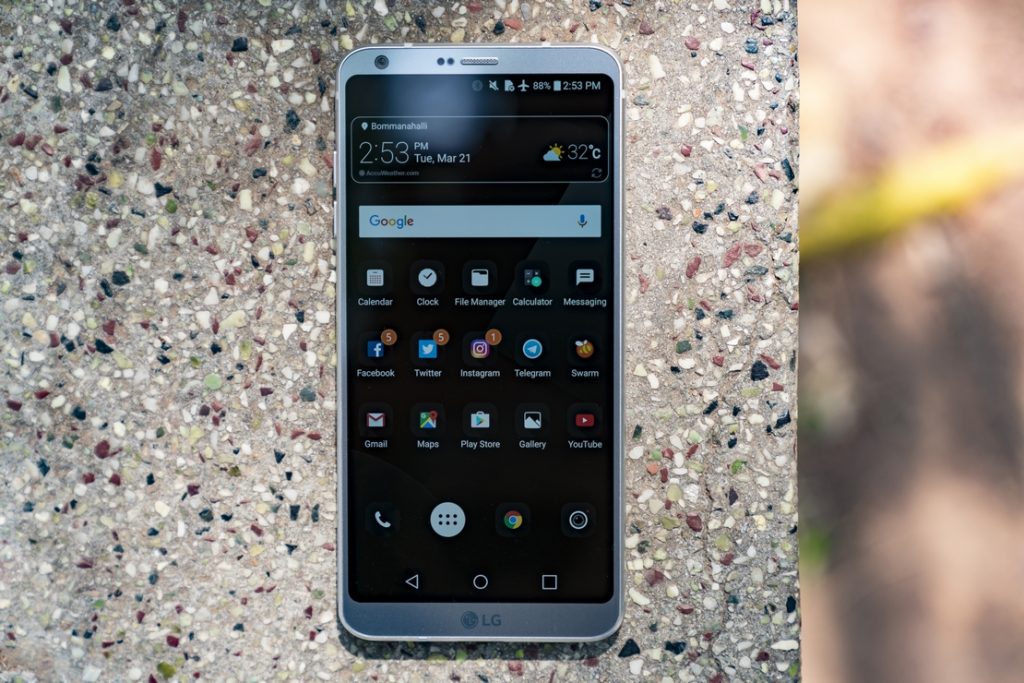
The LG G6 is a great smartphone and is one of the best available on the market at the moment. It is great to see LG go back to basics and concentrate on what the market actually needs instead of trying to impress the market with stuff they think it needs. The wide-angle camera, fully manual video mode, 18:9 aspect ratio display and compact size all are unique offerings and attribute to the great smartphone that it is.
Perhaps as an all round experience, this is the best that money can buy, at least until the S8 devices come out. However, it remains to be seen just how much money you need in order to buy this smartphone. If LG manage to price this good enough, it would be a smartphone that I would recommend and also encourage people to buy. There are a few faults just like any other smartphone out there but these faults aren’t really faults and even if they are, they certainly are easier to live with than its predecessors.
Pros
- Surprisingly Small and Ergonomic Design
- Great Build Quality and Durability
- Water and Dust Proof
- Beautiful Display with Unique 18:9 Aspect Ratio
- Great Video Stabilization
- Good Quality Camera
- Great Audio Output
Cons
- No 2.5D Curved Glass
- Excessive Noise Reduction for Still Photos
- Not Great Battery Life



